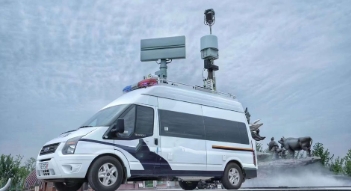Drones have always been a device that surprises and delights people, because drones can not only perform tasks such as high-altitude mapping and photography, but also carry explosives to sneak attack targets. Therefore, it has to be said that drone equipment is a dual-purpose equipment. Bladed sword. In order to reduce the threats posed by drones, anti-drone systems are used in many fields. The anti-drone system is a powerful tool for discovering and countering drones. With the countermeasure capabilities of the anti-drone system, we can Drone equipment is no longer so rampant. In the process of countering drones, discovering drone equipment is the key. So how can we identify drone equipment? This relies on the photoelectric identification and tracking technology of the anti-UAV system. With the help of the photoelectric identification function of the anti-UAV system, intruding UAV equipment can be easily discovered, so that countermeasures can be taken to deal with the UAV. Today we will learn about photoelectric identification and tracking technology to give everyone a deeper understanding of anti-drone systems.

Among them, photoelectric recognition and tracking technology is classified into two major categories, visible light recognition and tracking and infrared recognition and tracking. Generally speaking, visible light recognition and tracking uses visible light cameras to detect target drones and can easily identify drone targets. And it can track UAV targets, but this technology can only be used in daytime environment, and the cost of this type of equipment is also very low, and it can be widely used in different fields. When designing anti-UAV systems, some anti-UAV systems use photoelectric identification and tracking technology to easily identify target UAVs. In comparison, infrared recognition and tracking technology is also very advanced. With the help of infrared cameras, drone targets can be detected in infrared, and drone targets can also be tracked and identified. In fact, items with temperatures above absolute zero will radiate infrared rays. It can be identified with the help of infrared rays. When the drone is flying, both the battery and the motor can generate a certain amount of heat energy. With the help of infrared identification and tracking technology, intruding drone equipment can be easily identified. This technology can be used around the clock. However, the cost of this kind of equipment is relatively high, and the price of anti-drone systems using this technology is naturally expensive.

Photoelectric identification and tracking technology is a key means of detecting drones, so that corresponding measures can be taken to counter and respond, exerting a powerful tracking function, leaving drone equipment with nowhere to hide and directly exposed to the radar of the anti-drone system to achieve the function of visually tracking UAV targets. Especially after the anti-drone system is installed, this technology can be used to visually check the flight status of the drone equipment. Photoelectric recognition has strong advantages. It can track drone images, automatically identify drone targets, and easily obtain evidence.